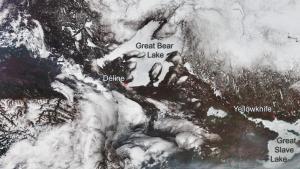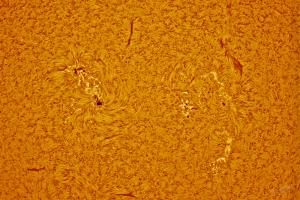Science
ALMA Dives into Black Hole’s ‘Sphere of Influence’

ALMA has made the most precise measurements of cold gas swirling around a supermassive black hole -- the cosmic behemoth at the center of the giant elliptical galaxy NGC 3258. The multi-color ellipse reflects the motion of the gas orbiting the black hole, with blue indicating motion toward us and red motion away from us. The inset box represents how the orbital velocity changes with distance from the black hole. The material was found to rotate faster the closer in the astronomers observed to the black hole, enabling them to accurately calculate its mass: a whopping 2.25 billion times the mass of our Sun.
- Read more
- 252 reads
How NASA Will Protect Astronauts From Space Radiation at the Moon

Earth’s magnetic bubble, called the magnetosphere, is illustrated in blue. The magnetosphere provides natural protection against space radiation, deflecting most charged solar particles from Earth.
- Read more
- 271 reads
Anatomy of a Cosmic Seagull

The Rosy Glow of a Cosmic Seagull.
- Read more
- 250 reads
Astrophysical shock phenomena reproduced in the laboratory

An example of an interstellar collisionless shock is seen in this photo of a bow shock in the Orion Nebula.
- Read more
- 252 reads
Washington State Suffers from Williams Flats Fire Caused by Lightning

Washington state endured a band of early morning thunderstorms
Washington State Suffers from Williams Flats Fire Caused by Lightning.
- Read more
- 260 reads
Shining (Star)light on the Search for Life

The young Earth's atmosphere might have looked like this artist’s interpretation — a pale orange dot.
- Read more
- 268 reads
The Moon and Mercury May Have Thick Ice Deposits

Conceptual illustration of permanently shadowed, shallow icy craters near the lunar south pole.
- Read more
- 244 reads
Human Rights
Fostering a More Humane World: The 28th Eurasian Economic Summi

Conscience, Hope, and Action: Keys to Global Peace and Sustainability

Ringing FOWPAL’s Peace Bell for the World:Nobel Peace Prize Laureates’ Visions and Actions

Protecting the World’s Cultural Diversity for a Sustainable Future

Puppet Show I International Friendship Day 2020




